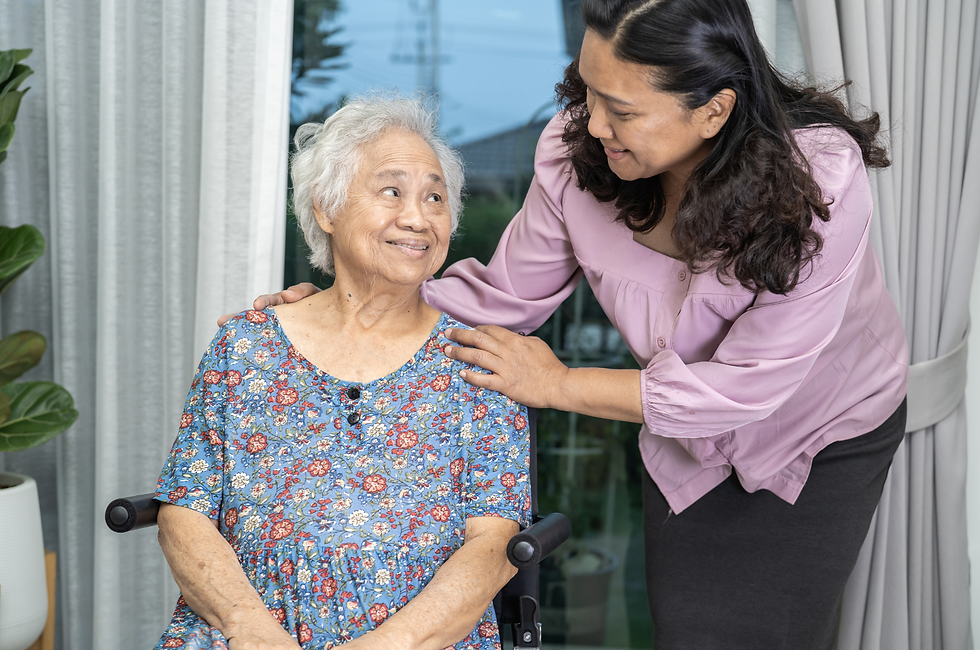The Benefits of Going Outside
- Senior Support Services

- May 16, 2022
- 2 min read
We’ve all heard of how important it is to go outside, how crucial it is to attain sunlight, and how daily exercise can impact our overall physical, mental, and spiritual levels. It is so important that we can “get away from the city” or “surround ourselves with nature.” If it is important to go outside, then why are older adults typically confined to care facilities? Considering how most older adults residing in long-term care homes are physically disabled and require the use of assistive devices (e.g., wheelchair or walker), then it should be a basic rule that long-term care homes should strive to take those who require help to go outside.
There are plentiful amounts of research as to why nature is important to our wellbeing as human beings, especially for older adults. Blue and green spaces and the natural landscapes are important for promoting the physical, mental, and social health of older adults (Finlay et al., 2015). Green spaces particularly enhance social wellbeing as the environment promotes interaction and engagement. Furthermore, older adults can develop distinct therapeutic relationships with the landscape. These landscapes push individuals to get out of the house to enjoy the fresh air, stimulate feelings of renewal, rejuvenation, and restoration, and allow individuals to have specific places to relax, contemplate, and connect spiritually to loved ones . However, there is a certain lack of these types of environments for older adults to access currently (Finlay et al., 2015).
Some older adults can experience nature in different ways compared to other older adults. Some have felt that their experiences with green and blue areas were threatening and dangerous (Finlay et al., 2015). Many avoided areas of parks at night, as it was a time where individuals cannot see and do not feel safe. One individual liked to walk on a treadmill instead of going out to the park as then he did not have to face other barriers to accessibility, such as safety while walking, as well as dodging other people, dogs, and bikes (Finlay et al., 2015). Most individuals have also said that they have a fear of falling, and therefore the weather on the day was a major factor affecting outdoor activities and experiences of green and blue spaces (Finlay et al., 2015). These unfortunate circumstances push individuals away from going outside and possibly take away from the multitude of benefits that people can gain from green and blue spaces.
Given the various biopsychosocial benefits of going outside for older adults, they should spend more time outside, with the help of caregivers providing comfortability and aid if necessary. Caregivers can come in the form of family members, or through home care support, such as what is provided by Senior Support Services of Southern Ontario. When going outside, individuals should aim to socially distance themselves to exercise the necessary safety precautions from COVID-19.
- Dylan Lu
Reference:
Finlay, Franke, T., McKay, H., & Sims-Gould, J. (2015). Therapeutic landscapes and wellbeing
in later life: Impacts of blue and green spaces for older adults. Health & Place, 34, 97–








Comments